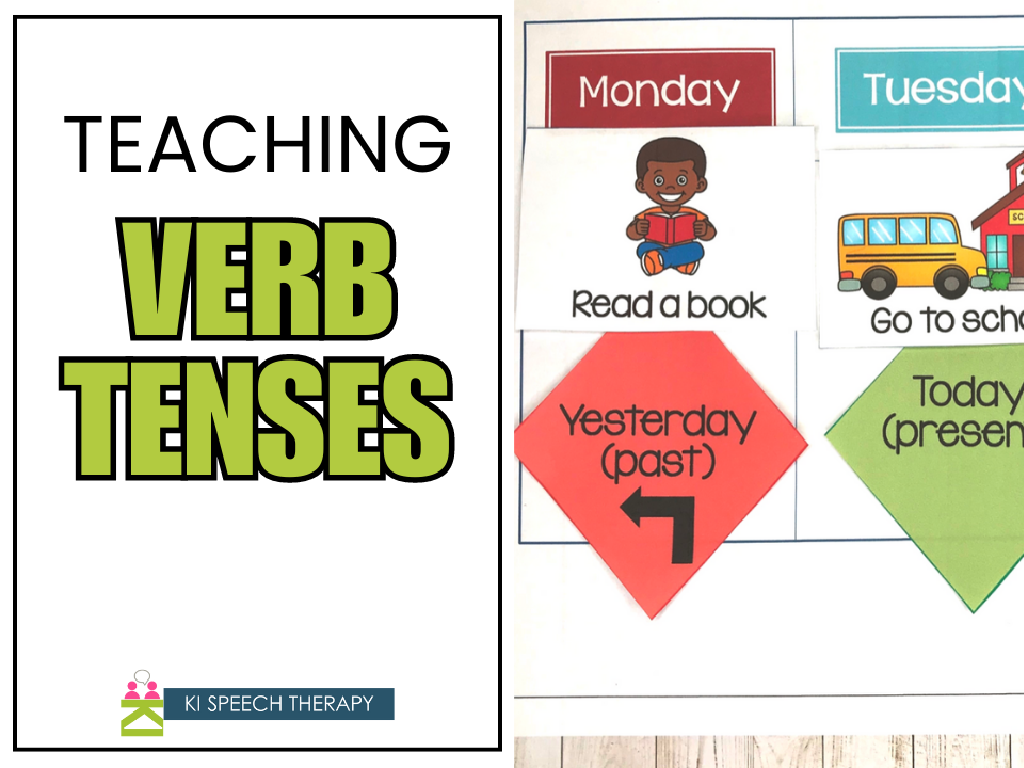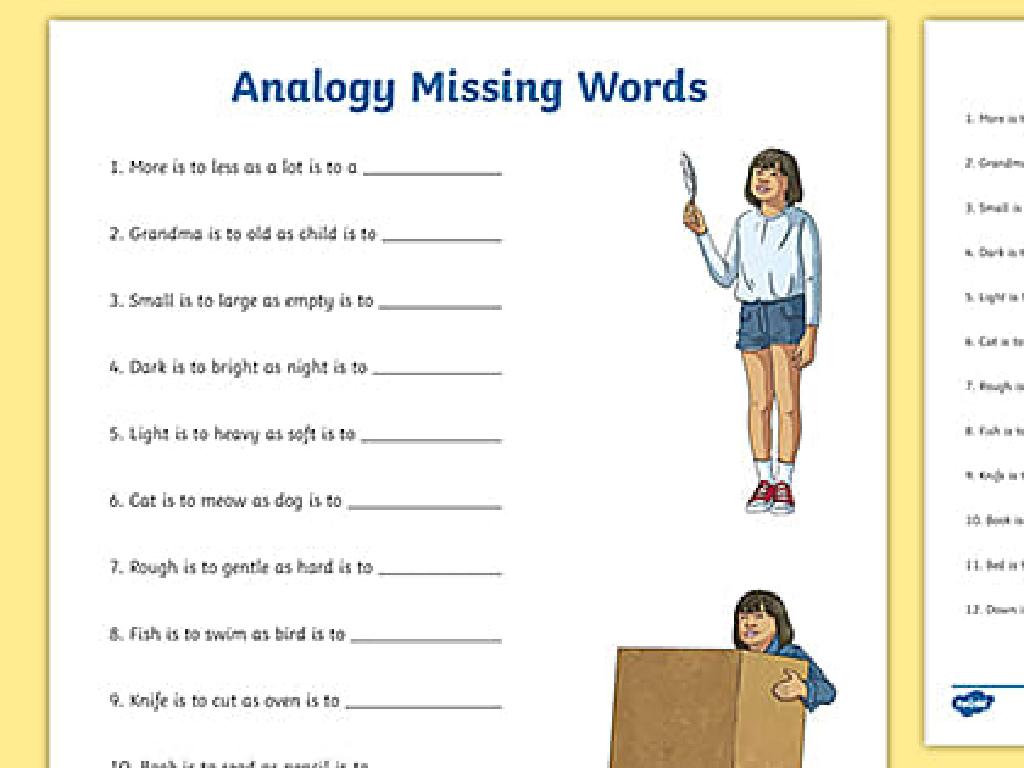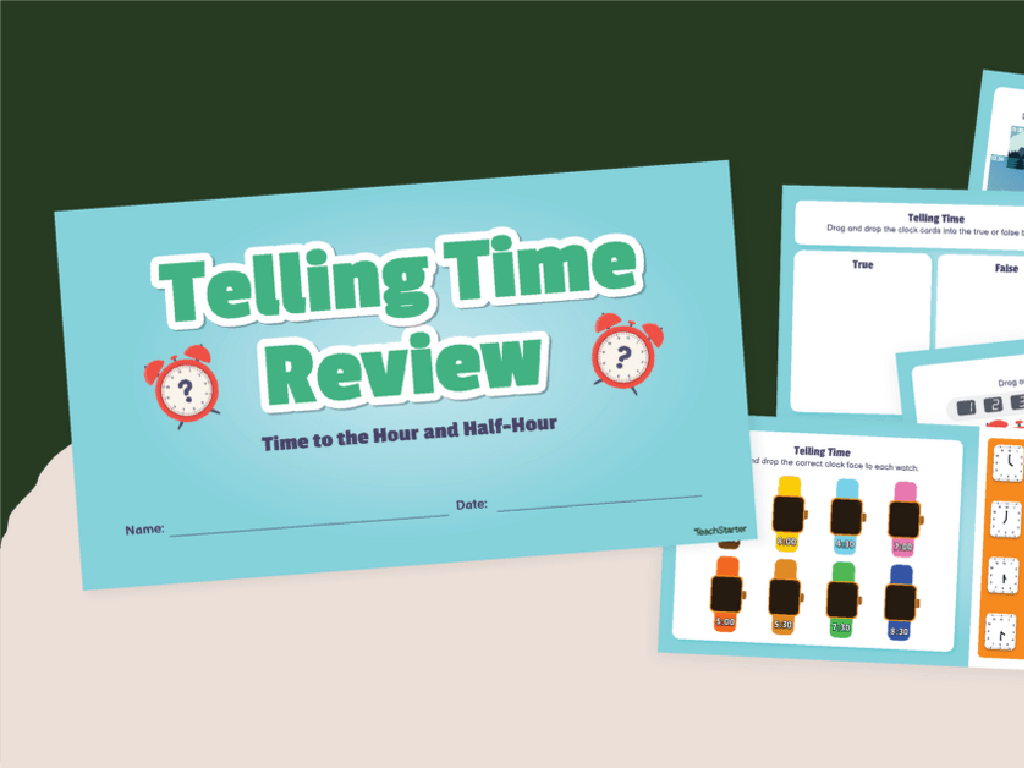Identify And Correct Plagiarism
Subject: Language arts
Grade: Sixth grade
Topic: Research Skills
Please LOG IN to download the presentation. Access is available to registered users only.
View More Content
Understanding Plagiarism in Research
– Importance of original work
– Original work shows your creativity and effort.
– Defining plagiarism
– Plagiarism is using others’ ideas or words without credit.
– Recognizing plagiarism
– Look for copied phrases or uncredited sources.
– Correcting plagiarized content
– Always credit the original author or rewrite in your own words.
|
This slide introduces the concept of plagiarism and its significance in research skills. Emphasize to students that original work is a reflection of their unique thoughts and hard work. Define plagiarism clearly, explaining that it is the act of presenting someone else’s work or ideas as their own without proper acknowledgment. Teach students how to spot potential plagiarism by checking for direct copies or ideas that don’t cite sources. Discuss the importance of giving credit and demonstrate how to paraphrase or quote correctly to avoid plagiarism. Encourage students to ask questions and provide examples of both plagiarized and corrected content for clarity.
Understanding Plagiarism
– Define plagiarism
– Using someone else’s work as your own without credit
– Explore types of plagiarism
– From copying text to stealing ideas or images
– Discuss seriousness of plagiarism
– It’s dishonest, unfair, and can have legal consequences
– Strategies to avoid plagiarism
– Learn to paraphrase, quote, and cite sources correctly
|
This slide aims to introduce students to the concept of plagiarism and its implications. Begin by defining plagiarism and emphasize that it’s not just about copying text, but also about using any original ideas, images, or other intellectual property without proper acknowledgment. Discuss the different forms plagiarism can take, such as direct, self, and accidental plagiarism. Highlight why plagiarism is considered a serious issue, touching on academic integrity, legal aspects, and the importance of originality. Conclude by providing students with strategies to avoid plagiarism, such as taking careful notes, understanding when and how to paraphrase, and the importance of citing sources. Encourage students to always ask for help if they’re unsure about how to use someone else’s work appropriately.
Understanding Plagiarism
– Direct copying is plagiarism
– Copying text word-for-word without quotation marks or citation
– Paraphrasing must credit the source
– Rewriting someone’s text in your own words still requires citation
– Presenting others’ ideas as your own
– Even if not word-for-word, using someone’s ideas without acknowledgment is plagiarism
– Importance of original work
|
This slide aims to educate students on what constitutes plagiarism, a serious issue in academic and creative work. Direct copying refers to taking someone else’s work and passing it off as your own without proper attribution. Paraphrasing without credit is also plagiarism, even if the words are changed; the original idea still belongs to someone else. Using someone else’s ideas without giving credit, even if not directly quoted, is a form of intellectual theft. Emphasize the importance of creating original work and respecting others’ intellectual property. Provide examples and encourage students to ask questions if they’re unsure about how to properly credit sources. Discuss the ethical and potential legal consequences of plagiarism.
The Importance of Avoiding Plagiarism
– Respect for original creators
– Giving credit to those who originally made the work
– Uphold academic honesty
– Being truthful in your studies shows character
– Understand plagiarism consequences
– Schools may impose penalties for copied work
– Impact beyond school
– Future careers can be affected by plagiarism
|
This slide aims to educate students on the importance of avoiding plagiarism and to foster an understanding of academic integrity. Emphasize the respect due to original authors for their work and the value of crediting sources. Discuss the ethical aspect of learning and the role of honesty in personal development. Highlight the potential consequences of plagiarism, such as failing assignments, suspension, or more severe academic penalties. Extend the conversation to the impact of plagiarism outside of school, including legal repercussions and damage to professional reputation. Encourage students to always strive for originality and to seek help if they are unsure about how to cite sources correctly.
How to Identify Plagiarism
– Check citations and references
– Ensure sources are properly credited
– Notice unusual phrasing
– Phrases that don’t fit the writer’s style may be copied
– Detect advanced vocabulary
– Advanced words not typical for the grade may indicate copying
– Utilize plagiarism tools
– Online tools can compare text to a database of sources
|
This slide aims to equip students with the skills to identify plagiarism in written work. Emphasize the importance of checking for proper citations and references as a first step to confirm if the information is properly credited. Teach students to be alert to unusual phrasing or vocabulary that seems too advanced for the expected writing level, as these can be signs of copied text. Introduce them to plagiarism detection tools available online, which can help in comparing the text against a vast database of academic sources. Encourage a discussion on why it’s important to use their own words and ideas, and how plagiarism undermines their learning and integrity.
Correcting Plagiarism: Honesty in Writing
– Master the art of paraphrasing
– Rewriting the original text in your own words without changing the meaning.
– Credit the original sources
– Acknowledge where ideas or words come from to show respect for the work of others.
– Use citations and references
– Follow a format guide (like MLA or APA) to list the sources you used in your work.
– Understand consequences of plagiarism
– Plagiarism can lead to loss of trust and academic penalties.
|
This slide aims to educate students on how to avoid plagiarism by learning to paraphrase, giving proper credit, and using citations. Emphasize the importance of understanding and respecting intellectual property. Teach them how to express ideas in their own words and to recognize the value of original work. Show examples of how to cite sources correctly. Discuss the ethical and potential academic consequences of plagiarism to reinforce the significance of academic integrity. Provide resources for citation guides and practice exercises for paraphrasing and citation.
Practice Activity: Spot the Plagiarism
– Divide into small groups
– Each group gets two texts
– Identify the plagiarized text
– Look for identical phrases or unusual similarities
– Discuss reasons for your choice
– Consider word choice, sentence structure, and ideas
|
This activity is designed to help students understand plagiarism by practicing identification in a collaborative setting. Divide the class into small groups to foster teamwork and discussion. Provide each group with two texts, ensuring one is an original and the other is plagiarized. Encourage students to look for direct copying, paraphrasing without credit, and similar structure or ideas without proper citation. After identifying the plagiarized text, each group should discuss their reasoning, focusing on specific examples from the texts. This will help them understand the importance of originality and the ethical use of sources. As a teacher, circulate among the groups to guide discussions and answer questions. Possible variations of the activity could include having groups present their findings, creating a class-wide discussion, or providing additional examples for comparison.
Creating Original Work: Avoiding Plagiarism
– Begin with personal ideas
– Conduct research and note-taking
– Gather information from various sources
– Express information in your own words
– Paraphrase the researched information
– Understand the value of originality
– Original work is more valuable and ethical
|
This slide aims to teach students the importance of creating original work and how to avoid plagiarism. Encourage students to start with their own ideas as a foundation for their work. Emphasize the importance of doing thorough research and taking detailed notes. Guide them on how to paraphrase the information they have learned, using their own words to express it. Discuss why originality is crucial, not just for avoiding plagiarism, but also for developing their own voice and critical thinking skills. Provide examples of paraphrasing versus direct quoting and explain the necessity of citing sources when appropriate.
Class Activity: Paraphrasing Practice
– Practice paraphrasing a text paragraph
– Remember: use your own words
– Don’t copy; express the same ideas differently
– Share your paraphrased paragraph
– Discuss how your version compares to the original
– Receive feedback from classmates
– Learn from peer suggestions and improve
|
This activity is designed to help students understand the importance of expressing ideas in their own words to avoid plagiarism. Provide a paragraph from a book or article for students to paraphrase. Remind them that paraphrasing is not just about replacing words with synonyms but also about restructuring sentences and rephrasing ideas. After they have written their versions, create a supportive environment for sharing their work with the class. Encourage constructive feedback, focusing on how effectively each student conveyed the original meaning without copying the text. This exercise will enhance their writing skills and comprehension of how to avoid plagiarism.
Conclusion & Homework: Originality Matters
– Recap: Identifying plagiarism
– Why originality is key
– Original work reflects your unique voice and effort
– Homework: Essay on plagiarism
– Write a short essay titled ‘Why I will not plagiarize’
– Embrace your unique perspective
– Your ideas are valuable and deserve to be heard
|
As we conclude today’s lesson on plagiarism, it’s crucial for students to understand the importance of originality in their work. Plagiarism undermines the value of individual effort and creativity. For homework, students are tasked with writing a short essay on ‘Why I will not plagiarize,’ which will help them internalize the lesson and reflect on the significance of producing their own work. This exercise encourages students to think critically about the consequences of plagiarism and the benefits of maintaining academic integrity. In the next class, we can discuss their essays and reinforce the concepts learned.





